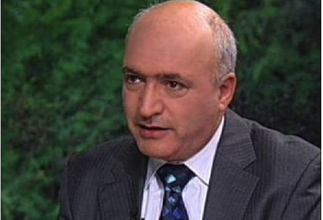
October 03, 2024
By Nasser Kandil
Many repeatedly call for the implementation of UN Security Council Resolution 1701, which was issued after grueling negotiations that accompanied the July 2006 war. However, these calls often rely on subjective interpretations that stray from the established principles and procedures for such cases.
All laws and treaties are essentially concise texts open to interpretation. Their true meaning can only be understood by referring to the minutes of the discussions that shaped them, a process known as seeking the intent of the legislator. Legislative intent is a constitutional principle in legal interpretation, well-known to constitutional law experts.
When reading the resolution, one might come across Resolution 1559, which calls for the disbandment of militias. At the time, this was understood as an effort to disarm the resistance. However, it is widely recognized that the mention of Resolution 1559 in the preamble of 1701, like other Security Council resolutions on Lebanon, is irrelevant. The negotiations leading to 1701 originally included proposals for deploying a multinational force under Chapter VII of the UN Charter to disarm the resistance. Yet, these negotiations failed due to the steadfastness of the resistance. After the occupation army’s military failure and heavy losses on the ground, it agreed to the final terms embodied in the resolution.
There were also talks before the resolution’s adoption about granting UNIFIL the authority to search valleys, caves, homes, and other sites suspected of harboring resistance weapons. But this proposal also failed, for the same reason. The final version of 1701 was reached through a mutual understanding: the resistance would refrain from armed displays south of the Litani River, and the Lebanese Army, with the support of UNIFIL, would assume responsibility for security in that area. Thus, implementing an alternative interpretation of 1701 would require a shift in the balance of power from the time of its adoption.
Implementing Resolution 1701, according to the negotiations that shaped it, does not trouble Hezbollah, as it imposes no new conditions on the resistance. The resolution does not, as some claim, mandate the withdrawal of the resistance and its weapons north of the Litani. Rather, it calls for refraining from armed appearances south of the Litani, a commitment Hezbollah has adhered to, even during times of war.
Resolution 1701 also places several obligations on the occupying entity, which it has consistently violated. This is why Lebanon continues to demand its implementation. Key among these obligations are: halting air and sea violations of Lebanese sovereignty, withdrawing from disputed Lebanese territories, including parts of the village of Ghajar occupied during the 2006 war, and, most importantly, the mandate for the UN Secretary-General to propose a solution to the dispute over the Shebaa Farms. While the occupation does not claim the right to remain there, it uses Resolution 242 and the area’s disputed status with the occupied Syrian Golan as a pretext. The former Secretary-General, Ban Ki-moon, once proposed placing the Shebaa Farms under UNIFIL control, a suggestion accepted by Lebanon but rejected by the occupying entity.
Those who advocate for the implementation of Resolution 1701 by calling for the resistance and its weapons to withdraw north of the Litani are effectively pushing for a version of the resolution that was rendered obsolete by the resistance’s resilience. The occupation’s failure on the ground forced it to accept the current version of the resolution, which is based on the understanding that the resistance’s commitment is limited to refraining from armed displays. Revisiting an earlier, now defunct version of the resolution would require the occupying entity to succeed in a ground war – something it failed to achieve in 2006.




